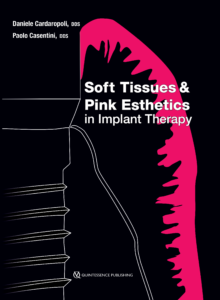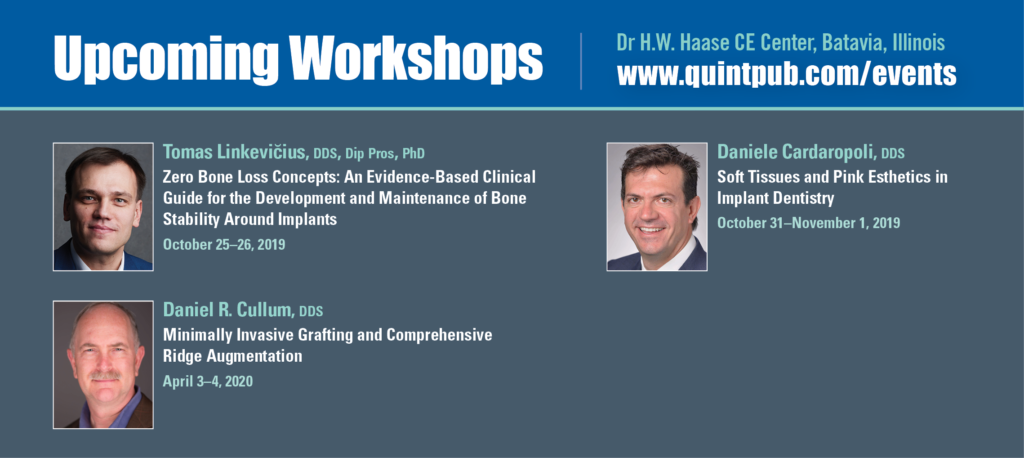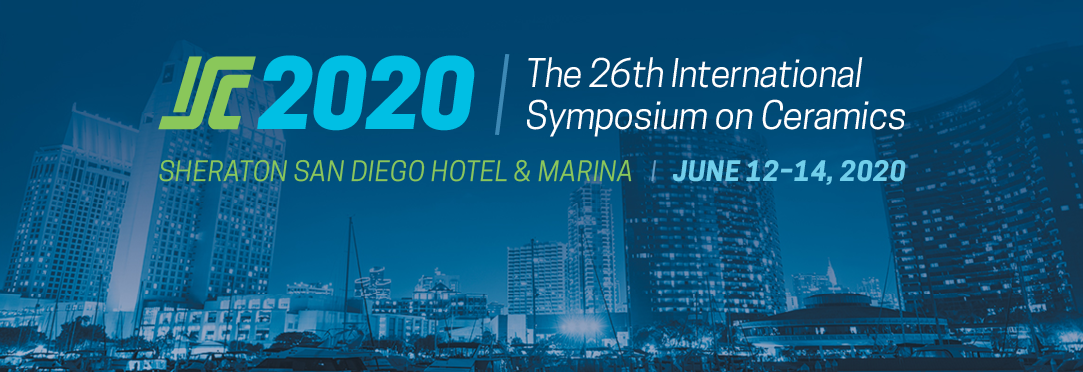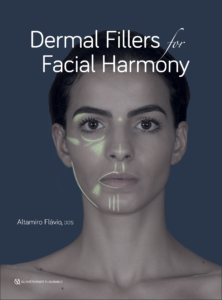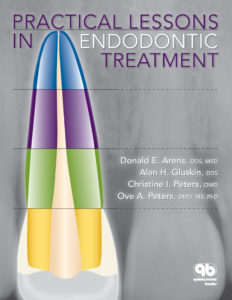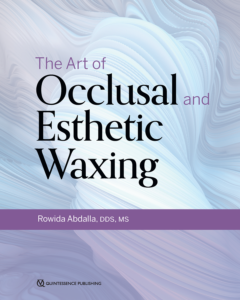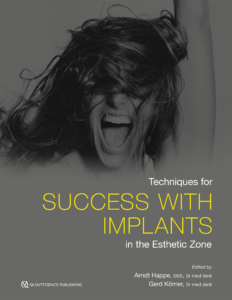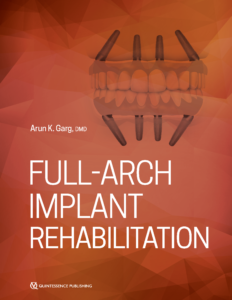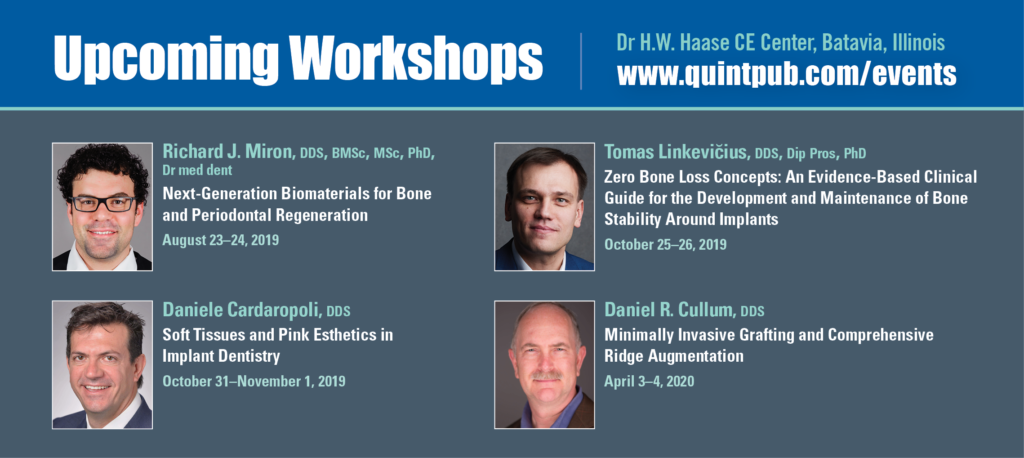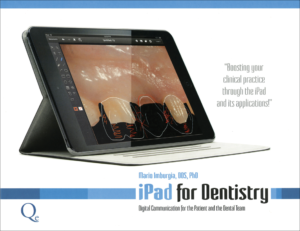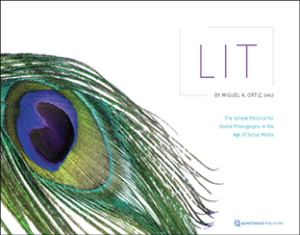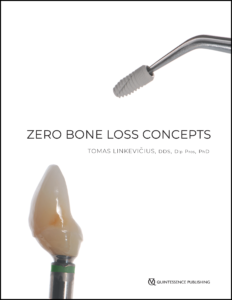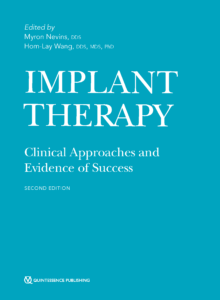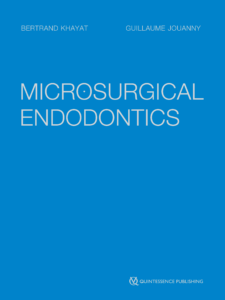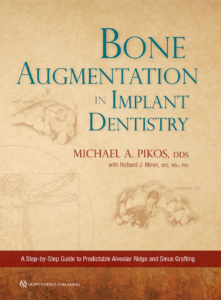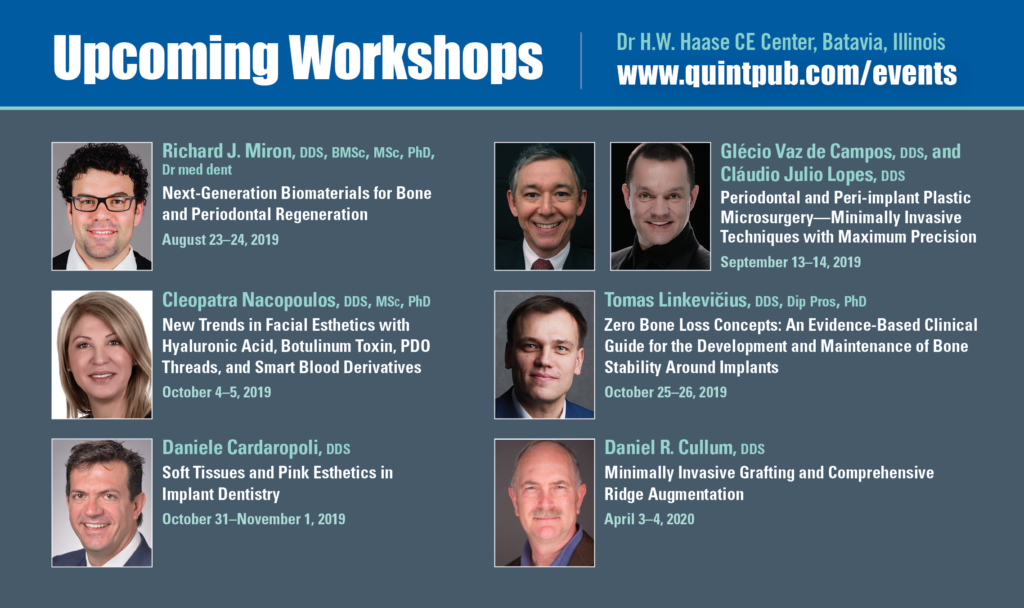Reading time: 7 minutes
Increased requests for more esthetic optimal prosthetic restorations combined with development of improved production technology have created opportunities for the introduction of new materials in prosthetic dentistry. Development of a digital workflow by computer-aided design/computer-assisted manufacturing (CAD/CAM) combined with milling machines with high precision designated for fabrication of prosthetic restorations also makes these materials and production technology interesting for use in implant dentistry. Zirconia ceramics has demonstrated favorable mechanical and biologic properties that can be milled and used for single crowns or fixed dental prostheses (FDPs). The material is available as monolithic zirconia with some limited esthetic qualities, but the material can be veneered with porcelain to establish improved esthetics.
It was thus of interest for this thematic abstract review to evaluate if zirconia ceramics is an alternative to metal-ceramic restorations as observed and reported in clinical studies.
A literature search of recent publications showed a few original studies and several review studies.
Spies and coworkers followed a group of patients receiving ceramic posterior single crowns made of zirconia with a hand-layered leucite-reinforced feldspathic veneering ceramic over a 5-year period in a prospective study. The crowns were adhesively cement-retained to zirconia ceramic one-piece dental implants. Out of the 45 single crowns, 1 had to be replaced due to severe chipping of the veneering ceramic, with a survival estimate of 97.5% regarded as excellent by the authors. During the observation period, significant technical complications such as major chipping and development of occlusal roughness affected several of the single crowns, resulting in a success estimate of 79.3%. Interestingly, these technical complications had no significant impact on patient satisfaction with the restorations. The satisfaction as measured by visual analog scale (VAS) scores was significantly improved after the treatment and showed no decrease during the 5-year observation time. The clinical performance of all-ceramic implant-supported single crowns was evaluated in a recent systematic review by Rabel and coworkers. This review included articles up to 2017 and reported on 2,390 single crowns with a mean follow-up period ranging from 1 year up to 18.5 years with a mean of 4.55 years. The all-ceramic single crowns were either fabricated as crowns cemented on an abutment (two part) or of one part, with the ceramic abutment directly veneered with a veneering ceramic. The single crowns were either made of veneered high-strength polycrystalline ceramics (aluminum oxide, yttrium-stabilized zirconia [Y-TZP], or aluminum oxide–zirconia composite), glass-based ceramic (feldspathic porcelain, leucite reinforced glass-ceramic, or lithium disilicate), or monolithic resin-nanoceramics. The authors reported an estimated 5-year survival rate of 93.0% and a 10-year survival rate of 94.4%. When performing a subgroup analysis, 5-year survival rates of 96.8%, 91.6%, 91.0%, and 67.0% were found for veneered alumina, veneered zirconia, monolithic LiS2, and hybrid resin-nano-ceramic, respectively. Technical complications appeared at a rate of 1.1% to 9%. The technical complications reported most often were chippings of the veneering ceramic with an estimated chipping rate of 9% after 5 years. Chipping seemed to be an event that was most likely to occur shortly after prosthesis insertion. Crowns retained to zirconia abutments were more prone to chipping than crowns on titanium abutments. The authors argue that chipping may be due to a mismatch of thermal conductivity of the veneering ceramic and the ceramic framework, but was also dependent on the location with lower chipping rates in the anterior areas. This systematic review also reported on occlusal roughness, 56.1%, and framework fractures of 1.9% after 5 years. Based on the findings in this review, chipping rates in posterior esthetically nondemanding areas might be reduced using monolithic single crowns supported by titanium implants.
Pjetursson et al presented a systematic review comparing zirconia-ceramic and metal-ceramic implant-supported single crowns. The paper(s) presented the results for the metal-ceramic single crowns published in 1998 to 2017 and the zirconia-ceramic single crowns published after 2013. Survival was defined as single crowns remaining in situ with or without modification for the entire observation period. The analysis revealed that of 4,363 metal-ceramic single crowns, 87 were lost, giving a 5-year survival rate of 98% for metal-ceramic implant-supported single crowns. From the 912 zirconia implant-supported single crowns, 23 were lost. This gave a 5-year survival rate of 98%. The differences were nonsignificant. Metal-ceramic and zirconia-ceramic single crowns in the posterior area showed higher failure rates than single crowns in the anterior area, but the difference was not statistically significant. Success was defined as an implant-supported single crown being free of all complications over the entire observation period. The estimated 5-year complication rate for the metal-ceramic single crowns was 13% and 16% for the zirconia-ceramic single crowns; the difference was not significantly different. Ceramic fractures or chippings occurred in 3% of the metal-ceramic single crowns and 9% of the zirconia-ceramic single crowns over the 5-year observation period, but significantly more failures due to material fracture were observed with the zirconia-ceramic single crowns (2%) than the metal-ceramic single crowns (0.2%). The study concluded that both materials performed excellently over a 5-year observation time, and no significant differences could be identified between the groups. From a biologic point of view, both crown materials performed well, but the zirconia-ceramics performed better from an esthetic point of view.
Lemos and coworkers evaluated a systematic review of the mechanical and biologic complication rates and survival of ceramic versus metal-ceramic implant-supported prostheses compared in the same study. The literature search was performed for studies published until March 2018. Minor chipping and ceramic fractures were the most frequently reported mechanical complications, and there were no significant differences between the ceramic vs the metal-ceramic prostheses. Subanalysis showed no significant differences between ceramic and metal-ceramic when analyzing for single crowns or FDPs.
Caramês and coworkers performed a prospective clinical study comparing porcelain-veneered zirconia frameworks to monolithic zirconia in full-arch implant rehabilitations of 150 patients. The study had a limited mean observation period of less than 2 years. In one group, Y-TZP was used as framework material that was completely veneered with a multilayering and multifiring feldspathic porcelain. The other group had an anatomically designed monolithic zirconia framework with a limited cutback, giving space for feldspathic veneering porcelain on the buccal surfaces only. The results demonstrated high survival for both groups with one framework fracture in each group, giving a 2-year survival rate of the 177 restorations of 99%. Prosthesis success was defined as absence of chipping. There was no significant difference in success between the two groups, and the complication rate was higher when the opposing arch was a full-arch implant-supported FDP. The authors concluded that zirconia is a suitable material for full-arch implant-supported FDPs with low incidence of technical complications. The monolithic zirconia group presented lower technical complication rates than the completely veneered group.
Pieralli and coworkers evaluated the clinical outcomes of partial and full-arch all-ceramic implant-supported FDPs in a systematic review and meta-analysis. The studies included in the review were published during the years 2012 to 2017. Analyzing the survival of the partial FDPs gave an estimated survival rate of 98% after 5 years. The studies reporting on full-arch FDPs showed an estimated survival rate of 98% after 5 years. Parameters such as location in the mouth, veneering material, and technique were not found to have significant influence on the survival of the reconstruction. Fracture of veneering ceramic and chipping were the most frequent technical complications reported, although the frequency varied between the studies. For the partial FDP group, a chipping rate of 23% was estimated for a 5-year observation period, whereas an estimated chipping rate of the full-arch FDPs was 35%.
Sailer and coworkers presented a comprehensive systematic review of survival and complication rates of zirconia and metal-ceramic multiple-unit implant-supported FDPs. The data analysis revealed that the estimated 5-year survival rate for metal-ceramic implant-supported FDPs was 99%, whereas the corresponding survival rate for zirconia FDPs was 93%. This difference between metal-ceramic and zirconia FDPs reached statistical significance. Significantly more zirconia implant-supported FDPs were lost due to ceramic or framework fractures, 4%, compared with only 0.2% for metal-ceramic implant-supported FDPs. Sailer and coworkers reported, as seen in the other studies and reviews, an increased chipping for the zirconia implant-supported FDPs compared with metal-ceramic implant-supported FDPs. Due to the documented pronounced risk for framework fractures and chipping, conventionally veneered implant-supported zirconia FDPs should not be considered as the material of first priority for full-arch FDPs. Monolithic zirconia seems to be a promising alternative, but medium- and long-term clinical data are still lacking.
Zirconia-ceramic can, on the other hand, be recommended as a valid alternative to metal-ceramic as material for implant-supported single crowns.
Jan-Eirik Ellingsen, DDS, PhD
University of Oslo
Oslo, Norway
Thematic Abstract Review Section Editor
Clark M. Stanford, DDS, PhD
The University of Illinois at Chicago, Chicago, Illinois, USA
Abstracts referenced:
Spies BC, Balmer M, Jung RE, Sailer I, Vach K, Kohal RJ. All-ceramic single crowns supported by zirconia implants: 5-year results of a prospective multicenter study. Clin Oral Implants Res 2019;30:466–475.
Rabel K, Spies BC, Pieralli S, Vach K, Kohal RJ. The clinical performance of all-ceramic implant-supported single crowns: A systematic review and meta-analysis. Clin Oral Implants Res 2018;29(suppl 18):196–223.
Pjetursson BE, Valente NA, Strasding M, Zwahlen M, Liu S, Sailer I. A systematic review of the survival and complication rates of zirconia‐ceramic and metal‐ceramic single crowns. Clin Oral Implants Res 2018;29(suppl 16):199–214.
Lemos CAA, Verri FR, Gomes JML, et al. Ceramic versus metal-ceramic implant-supported prostheses: A systematic review and meta-analysis. J Prosthet Dent 2019;121:879–886.
Caramês J, Marques D, Barbosa JM, Moreira A, Crispim P, Chen A. Full‐arch implant‐supported rehabilitations: A prospective study comparing porcelain‐veneered zirconia frameworks to monolithic zirconia. Clin Oral Implants Res 2019;30:68–78.
Pieralli S, Kohal RJ, Rabel K, von Stein-Lausnitz M, Vach K, Spies BC. Clinical outcomes of partial and full-arch all-ceramic implant-supported fixed dental prostheses. A systematic review and meta-analysis. Clin Oral Implants Res 2018;29(suppl 18):224–236.
Sailer I, Strasding M, Valente NA, Zwahlen M, Liu S, Pjetursson BE. A systematic review of the survival and complication rates of zirconia-ceramic and metal-ceramic multiple-unit fixed dental prostheses. Clin Oral Implants Res 2018;29(suppl 16):184–198.
This article was originally published in the July/August 2019 edition (Vol 34, issue 4) of The International Journal of Oral & Maxillofacial Implants.
©2019 BY QUINTESSENCE PUBLISHING CO, INC. PRINTING OF THIS DOCUMENT IS RESTRICTED TO PERSONAL USE ONLY. NO PART MAY BE REPRODUCED OR TRANSMITTED IN ANY FORM WITHOUT WRITTEN PERMISSION FROM THE PUBLISHER.
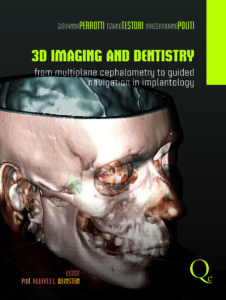 3D Imaging and Dentistry: From Multiplane Cephalometry to Guided Navigation in Implantology
3D Imaging and Dentistry: From Multiplane Cephalometry to Guided Navigation in Implantology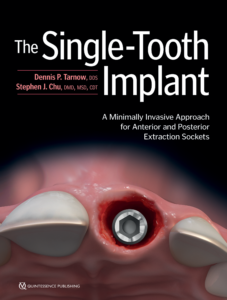 The Single-Tooth Implant: A Minimally Invasive Approach for Anterior and Posterior Extraction Sockets
The Single-Tooth Implant: A Minimally Invasive Approach for Anterior and Posterior Extraction Sockets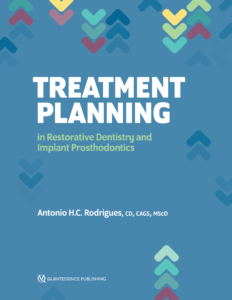 Treatment Planning in Restorative Dentistry and Implant Prosthodontics
Treatment Planning in Restorative Dentistry and Implant Prosthodontics
